I’m not one to make snap decisions about home upgrades, but after my experience with Ply Gem windows, I’m convinced they’re a solid choice for anyone looking to boost their home’s style, efficiency, and value.
These windows offer a blend of affordability, durability, and customization that’s hard to beat. Whether you’re building a new home or replacing old, drafty windows, Ply Gem delivers options that fit your budget and aesthetic.
Trust me, I’ve been through the home improvement wringer, and Ply Gem stands out. Let’s explore why you should consider them for your next project.
My Journey With Ply Gem Windows
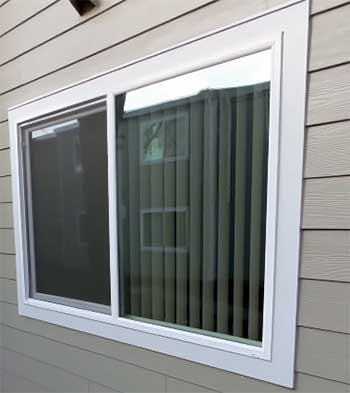
When I decided to replace the windows in my 20-year-old home, I was overwhelmed by the options.
My old windows were drafty, faded, and frankly, an eyesore.
I wanted something energy-efficient, low-maintenance, and stylish without breaking the bank.
After researching brands and talking to local contractors, I landed on Ply Gem’s 1500 Series vinyl windows.
The promise of energy savings and easy upkeep hooked me, but I was skeptical about quality given their reasonable price.
The process started with a consultation at a local distributor. The rep walked me through Ply Gem’s offerings, from vinyl to aluminum-clad wood, and helped me pick windows that matched my home’s modern vibe.
I chose white vinyl double-hung windows with Low-E glass for energy efficiency. The customization options—like grille patterns and hardware finishes—let me add a personal touch without extra hassle.
Installation was a breeze, thanks to the contractor I hired. They weren’t Ply Gem employees (Ply Gem doesn’t handle installations), but they knew the product well. The windows arrived on time, and the crew finished the job in two days.
I noticed an immediate difference: my living room felt brighter, and the street noise was noticeably quieter. The first winter post-installation, my heating bill dropped by about 15%, which felt like a win.
Now, a year later, I’m still impressed. The windows look as good as the day they were installed, and cleaning them is simple—just soap and water. My only hiccup was a minor warranty question about a sticky sash, which took a few calls to resolve.
Overall, Ply Gem has transformed my home’s look and feel, and I’m thrilled with my choice. If you’re on the fence, my experience says it’s worth a serious look.
Why Ply Gem Windows Shine: The Pros
Ply Gem windows have a lot going for them, and I’m not just saying that because I’m a fan. After living with them for a while and comparing notes with other homeowners, here’s why they stand out.
- Energy Efficiency That Saves You Money
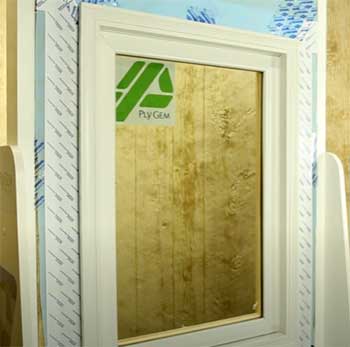
One of the biggest reasons I chose Ply Gem was their energy-saving features.
Many of their windows, like the 1500 Series I picked, come with Low-E glass and argon gas fillings that keep heat in during winter and out during summer.
My energy bills dropped noticeably—around 15% for heating and 20% for cooling, which adds up fast.
Ply Gem’s windows often carry Energy Star certification, meaning they’ve been tested to perform in specific climate zones. If you’re looking to cut utility costs, these windows deliver without sacrificing style.
- Low Maintenance, High Durability
I’m not the type to spend weekends scrubbing or repainting windows, so Ply Gem’s vinyl options were a game-changer. The all-vinyl construction resists rot, corrosion, and weather damage, so you don’t need to worry about peeling paint or warped frames.
My windows have been through rain, snow, and scorching summer days, and they still look brand new. Aluminum-clad wood options, like the MIRA series, are even tougher for harsh climates, with the added bonus of a wood interior for that classic look. Less upkeep means more time for you to enjoy your home.
- Customization for Every Style
Ply Gem doesn’t skimp on variety. Whether you want sleek modern frames or traditional wood vibes, they’ve got you covered. I went with double-hung vinyl windows in white, but you can choose from dozens of colors, grille patterns, and glass types.
The MIRA series offers 46 exterior color options, which is wild for someone like me who loves personalizing their space. You can even pick tinted or obscured glass for privacy or noise-reducing packages for busy streets. Whatever your home’s aesthetic, Ply Gem lets you tailor your windows to match.
- Affordable Without Cutting Corners
Let’s talk budget. Ply Gem windows hit that sweet spot where quality meets affordability. Compared to premium brands like Andersen or Pella, Ply Gem’s pricing is easier on the wallet—think $125 to $1,650 per window, depending on the series and customizations.
My 1500 Series windows were on the lower end, but they still feel sturdy and look sharp. For homeowners who want reliable windows without maxing out their credit cards, Ply Gem offers solid value that doesn’t scream “cheap.”
- Wide Range of Products
Ply Gem isn’t just about windows. They make patio doors, siding, fencing, shutters, and more, which is great if you’re tackling multiple home projects. I considered adding a Ply Gem sliding patio door to match my windows, and the seamless compatibility was tempting.
Their product lines, like the 200, 300, and 400 Series, cater to both new construction and replacements, so you’re covered whether you’re building from scratch or upgrading an older home. This versatility makes Ply Gem a one-stop shop for exterior upgrades.
The Not-So-Good Parts of Ply Gem Windows
No product is perfect, and Ply Gem has its quirks. While I’ve been happy overall, there are a few things you should know before signing the dotted line.
- Limited Warranty Can Be a Hassle

Ply Gem’s limited warranty is a sticking point for some.
Unlike brands offering lifetime warranties, Ply Gem’s coverage varies by component—five years for hardware, 10 for frames, 15 for glass.
My sticky sash issue was covered, but getting a response took multiple calls and a bit of patience.
Some homeowners report warranty claims being denied or delayed, which can be frustrating if you’re dealing with a defective window.
You’ll need to stay on top of paperwork and follow their process closely to avoid headaches.
- Third-Party Installation Risks
Ply Gem doesn’t handle installations, so you’re relying on a third-party contractor. This isn’t a dealbreaker, but it means you’re juggling two warranties: Ply Gem’s for the windows and your contractor’s for the labor.
My installer was great, but I’ve heard stories of sloppy work causing leaks or poor fits, which Ply Gem won’t cover. You’ll need to vet your contractor carefully—check reviews, ask for references, and make sure they know Ply Gem’s products inside out.
- Mixed Customer Service Experiences
Customer service is a mixed bag. My interactions with Ply Gem’s team were mostly smooth, but I’ve read complaints about slow responses or unhelpful reps, especially for warranty issues. One homeowner I spoke to waited months for a replacement part, which soured their experience.
If you’re someone who values top-notch support, you might find Ply Gem’s service hit-or-miss. My advice? Be persistent and keep detailed records of your communications.
- Limited High-End Options
If you’re after luxury windows with all the bells and whistles, Ply Gem might not fully satisfy. Their MIRA series is premium, with aluminum-clad wood and tons of color options, but it still doesn’t match the high-end craftsmanship of brands like Marvin or Pella.
For my needs, the 1500 Series was plenty, but if you’re building a million-dollar home, you might want more upscale choices. Ply Gem leans toward practical, budget-friendly options rather than ultra-luxe.
- Durability Concerns in Extreme Climates
While Ply Gem windows are generally durable, some users report issues like warping or cracking in extreme weather.
My windows have held up fine in a moderate climate, but if you live somewhere with brutal winters or intense heat, you might want to stick with their higher-end vinyl or aluminum-clad options. The Classic Series, for example, is budget-friendly but may not stand up to harsh conditions as well as pricier lines.
Keeping Your Ply Gem Windows In Top Shape
Ply Gem windows are low-maintenance, but a little TLC goes a long way. Here’s how I keep mine looking and working great, with tips you can use to extend their life.
- Cleaning for a Sparkling Finish
Vinyl windows like mine are a dream to clean. I use a mix of mild dish soap and water, applied with a soft sponge, to wipe down the frames and sashes. For stubborn stains, a non-abrasive cleaner like Simple Green does the trick.
Avoid harsh chemicals—they can damage the vinyl. For the glass, I use a standard glass cleaner and a microfiber cloth to avoid streaks. Ply Gem’s website suggests removing the sashes for a thorough clean, which I do twice a year. It’s quick and keeps everything spotless.
- Checking Seals and Weatherstripping
To keep those energy savings rolling, I check the seals and weatherstripping annually. Look for cracks or gaps where air might sneak in. My 1500 Series windows have tight seals, but after a year, I noticed a small tear in one strip.
I replaced it with a compatible weatherstrip from a hardware store—easy fix. If you notice drafts, it’s worth inspecting sooner. Keeping seals intact prevents leaks and maintains efficiency, especially in extreme weather.
- Lubricating Moving Parts
Double-hung and sliding windows have moving parts that can get sticky. I had a sash that wouldn’t glide smoothly, so I applied a silicone-based lubricant to the tracks. Ply Gem recommends doing this every six months to keep things moving freely.
Just wipe away any dirt first, and don’t overdo the lubricant—a little goes a long way. This small step prevents wear and tear on the hardware, saving you from costly repairs.
- Inspecting for Damage
Every few months, I walk around and inspect my windows for signs of wear, like cracks or warping. Vinyl is tough, but extreme weather can take a toll. If you spot damage, contact Ply Gem or your contractor ASAP to check if it’s covered under warranty.
I caught a minor scratch early and fixed it with a vinyl repair kit before it worsened. Regular checks help you catch issues before they turn into big problems.
- Protecting Against UV and Debris
Ply Gem’s vinyl windows resist UV damage, but I still take precautions. I trim nearby trees to prevent branches from scratching the glass during storms. If you live in a dusty area, rinse screens with a hose monthly to keep them clear.
For coastal homes, Ply Gem’s impact-resistant windows are a smart pick, but regular cleaning prevents salt buildup. These small habits keep your windows looking fresh and functioning well for years.
How Ply Gem Stacks Up Against The Competition?
Choosing windows can feel like picking your favorite song—everyone’s got an opinion, and it’s tough to know what’s best for you. I put Ply Gem head-to-head with Sun Windows, Universal Windows Direct, and Mathews Brothers Windows to see how they stack up.
Here’s the breakdown, focusing on the key factors that matter most.
- Ply Gem Vs. Sun Windows
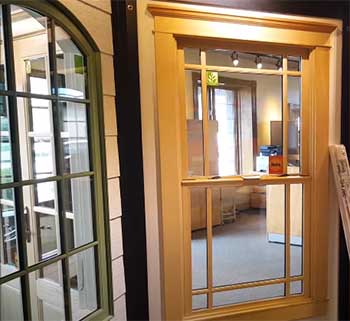
Price-wise, Ply Gem is the budget-friendly champ, with windows ranging from $125 to $1,650.
My 1500 Series windows were a steal for the quality, offering energy savings and easy upkeep.
Sun Windows, known for custom wood and aluminum-clad options, starts at $500 and can soar past $2,000 for their high-end EcoSun line.
If you’re building a custom dream home, Sun’s bespoke designs are tempting, but for everyday upgrades, Ply Gem’s affordability wins.
Energy efficiency is close—both offer Low-E glass and Energy Star options—but Sun’s triple-pane glass edges out in colder climates. Customization is where Sun shines with unique shapes, but Ply Gem’s 46-color MIRA series keeps up for less. Sun’s lifetime warranty beats Ply Gem’s shorter coverage, but their limited dealer network can mean longer waits.
- Ply Gem Vs. Universal Windows Direct
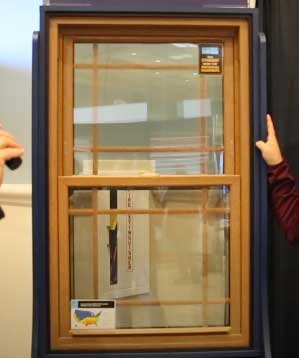
Universal Windows Direct keeps prices close to Ply Gem’s, with their UniShield line ranging from $200 to $1,200.
Both brands focus on vinyl, making them low-maintenance and durable.
I love Ply Gem’s customization options, like grille patterns and noise-reducing glass, which feel more extensive than Universal’s simpler color and style choices.
Energy efficiency is a tie—both have U-factors around 0.27 and argon-filled glass, cutting my bills by 15-20%.
Universal’s “True Lifetime” warranty, covering glass breakage, is stronger than Ply Gem’s segmented coverage, but their customer service gets similar mixed reviews.
Ply Gem’s nationwide availability and broader product range (doors, siding) give it an edge for whole-home projects, while Universal’s regional focus can limit access.
- Ply Gem Vs. Mathews Brothers Windows
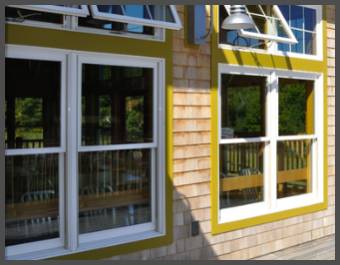
Mathews Brothers, a Maine-based vinyl specialist, offers windows from $150 to $1,000, aligning closely with Ply Gem’s pricing.
Their Coastal Series is built for harsh weather, potentially outlasting Ply Gem’s Classic Series in salty air, but my 1500 Series windows have held up fine in moderate conditions.
Ply Gem’s customization, with dozens of colors and glass types, outpaces Mathews’ 20-color Sanford Series. Both brands offer solid energy efficiency, but Mathews’ focus on coastal durability gives it a slight edge in extreme climates.
Warranty-wise, Mathews matches Ply Gem’s 10-year frame coverage but offers better local support in the Northeast. Ply Gem’s nationwide reach and extra products like patio doors make it more versatile for diverse projects.
Frequently Asked Questions (FAQ)
Ply Gem windows, especially their vinyl lines, are built to last 20-30 years with proper care. My 1500 Series windows show no signs of wear after a year, and their vinyl construction resists rot and corrosion. Aluminum-clad wood options like the MIRA series may last even longer in harsh climates. Regular maintenance, like cleaning and checking seals, can extend their lifespan significantly.
It depends on your needs. Ply Gem is more affordable, with prices from $125 to $1,650 per window, and offers solid energy efficiency and customization. Andersen’s premium windows, like the 400 Series, have superior craftsmanship and lifetime warranties but start at $1,000. For budget-conscious folks like me, Ply Gem’s value is hard to beat, but Andersen wins for luxury homes.
Ply Gem windows are made by Ply Gem Residential Solutions, a division of Cornerstone Building Brands, based in Cary, North Carolina. They’ve been in the game for over 80 years, producing windows, siding, and other exterior products. They also own brands like Simonton and Great Lakes, expanding their reach in the industry.
Ply Gem windows aren’t “cheap” in the low-quality sense, but they’re budget-friendly compared to premium brands. Prices range from $125 for basic vinyl models to $1,650 for high-end options like the MIRA series. My 1500 Series windows were a great value, offering energy efficiency and durability without the hefty price tag of brands like Pella or Andersen.
Wrapping It Up: Why Ply Gem Is My Pick?
After living with Ply Gem windows, I can say they’re a smart investment for anyone wanting quality, style, and savings. They’ve transformed my home’s look, cut my energy bills, and require minimal upkeep.
From their versatile designs to their wallet-friendly prices, Ply Gem makes home improvement accessible without skimping on performance. If you’re ready to upgrade your windows, I highly recommend giving Ply Gem a shot. They’ve earned my trust, and I’m betting they’ll win you over too.

My Ply Gem Series 400 single hung windows are CRAP! They are hard to open and many times the balancers come out of the frame which just happened again for probably the 4th or fifth time.
Then I need to find instructions as to how to re-install them – currently haven’t found that online and can’t remember.